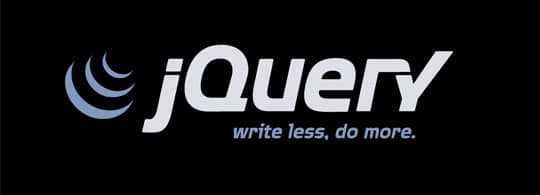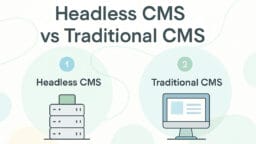Web interface or design decides the success or failure of any website or app. A brilliant user interface is all about helping the user to accomplish a given task as simply and efficiently as possible. While the look and feel are undeniably important but at the core of a great web interface is the function, with regard to navigation, it should be intuitive to the point of being invisible. The web interface fails as soon as a user gets lost, or can’t work out where to go. In this article, we will discuss building web interfaces and how the various platforms to create interfaces are useful to satisfy all of the above requirements and more.
1) React
 React is a modern framework built by the Facebook engineering legions for creating UIs. It provides a unique data rendering approach, reusable components and the web interfaces built with React are flexible, fast, and lightweight. It is efficient and so easy to learn that it can be easily taught online with lessons. To quickly implement React in your projects, learn it from Ray as he reviews React’s component architecture and also covers essential skills such as breaking code into custom subcomponents, handling events, managing form fields with references, setting up sorting and search, etc. With React, you can easily learn to focus on the specifics of creating web interfaces and transition the techniques in your projects quickly.
React is a modern framework built by the Facebook engineering legions for creating UIs. It provides a unique data rendering approach, reusable components and the web interfaces built with React are flexible, fast, and lightweight. It is efficient and so easy to learn that it can be easily taught online with lessons. To quickly implement React in your projects, learn it from Ray as he reviews React’s component architecture and also covers essential skills such as breaking code into custom subcomponents, handling events, managing form fields with references, setting up sorting and search, etc. With React, you can easily learn to focus on the specifics of creating web interfaces and transition the techniques in your projects quickly.
Related article you may like: How to Develop Simple JavaFX Desktop Applications.
2) AngularJS

AngularJs is the alternative choice for building a web interface. It is a front-end framework that allows us to build out beautiful single page applications. All we need to know is to become well versed with all the concepts and give it a go. It requires a necessary configuration, routing, controllers, and services, etc. that can make up an Angular app. AngularJS is a broad framework and perfect for creating single page applications in an accurate manner.
3) jQuery

jQuery UI solves your challenge to create a seriously decent looking design for your web app and helps an amazing deal in quickly develop web apps with very less time spent on the user interface design. jQuery is primarily used with client-side JavaScript code, and JavaScript has always been at the heart of developing any web page. jQuery UI comes prepackaged with UI widgets and CSS styles to accomplish tasks like rather than using a traditional pop-up window; you can set up a window that prompts a user for the information. It even speeds up the time needed to write UI code and providing shortcuts for many day-to-day activities.
4) Backbone.js
 Backbone.js comprises of well-managed plugins that make applications easier to design and scale.Backbone.js keeps your JavaScript code neat, and separate your markup from the data powering your web applications. Backbone’s offers fantastic server-side capabilities and offers most relevant features to front-end developers and web designers who wish to build out their web pages in an elegant way keeping their code organized, move away from the DOM. Working in a neat way not only speed’s up the work but also helps the developers to create an attractive visual design in a seamless way.
Backbone.js comprises of well-managed plugins that make applications easier to design and scale.Backbone.js keeps your JavaScript code neat, and separate your markup from the data powering your web applications. Backbone’s offers fantastic server-side capabilities and offers most relevant features to front-end developers and web designers who wish to build out their web pages in an elegant way keeping their code organized, move away from the DOM. Working in a neat way not only speed’s up the work but also helps the developers to create an attractive visual design in a seamless way.
5) RxJS
 Applications over the web have changed from being a simple static page to DHTML with animations to the Ajax revolution. And it becomes complex to manage every time we’re adding new things and more data to it. The Reactive Extensions for JavaScript includes libraries for composing asynchronous and event-based programs using observable sequences and fluent query operators. “Reactive Architectures” are event-driven, resilient and responsive and using them you have all the tools you need to help build the systems in the simplest way.
Applications over the web have changed from being a simple static page to DHTML with animations to the Ajax revolution. And it becomes complex to manage every time we’re adding new things and more data to it. The Reactive Extensions for JavaScript includes libraries for composing asynchronous and event-based programs using observable sequences and fluent query operators. “Reactive Architectures” are event-driven, resilient and responsive and using them you have all the tools you need to help build the systems in the simplest way.
Related article you may like: RxJS websocket example.
6) Vue.js
 Vue.js is a great alternative to large frameworks like AngularJS. AngularJS is a front-end framework that allows us to build out great single page applications, for many projects, frameworks like Angular feels heavy and more than what we need. If our entire requirement is to implement only a few features for a smaller application, Angular.js can be a bit heavy to setup whereas, for something which is quite lightweight, a better solution can be Vue.js. Vue.js offers a perfect solution for cases where we want to create single page apps without a lot of overhead quickly. It offers a flexible library and is easy to work with. For a developer, experienced with Angular, it feels right at home. To build a full-fledged single page application with Vue.js, use vue-router that integrates with the Vue.js core to handle routing.
Vue.js is a great alternative to large frameworks like AngularJS. AngularJS is a front-end framework that allows us to build out great single page applications, for many projects, frameworks like Angular feels heavy and more than what we need. If our entire requirement is to implement only a few features for a smaller application, Angular.js can be a bit heavy to setup whereas, for something which is quite lightweight, a better solution can be Vue.js. Vue.js offers a perfect solution for cases where we want to create single page apps without a lot of overhead quickly. It offers a flexible library and is easy to work with. For a developer, experienced with Angular, it feels right at home. To build a full-fledged single page application with Vue.js, use vue-router that integrates with the Vue.js core to handle routing.
7) Ember.js

Ember.js offers single page application framework for building modern web applications. It was the most popular in the construction of single page applications before Angular and React. Ember.js remains a great option for developers wanting to create new front-end clients. Ember offers a well-defined model structure that supercharges web applications. It was a very painful process to build compelling interfaces on the web earlier because of the form elements that were limited in their capability and usability. EmberUI provides a full replacement for all form field types, in addition to offering some of its own. It provides a seamless experience to the user throughout the app regardless of what OS or browser they may be using.
Conclusion

Developers have multiple options to choose from, and it is highly important that the web interface is clear and too much stuff on the screen at the same time ruins the user experience as finding what you’re looking for becomes tuff, and hence the interface becomes complicated to use. The real challenge is to make a great interface that is concise and definite at the same time.






